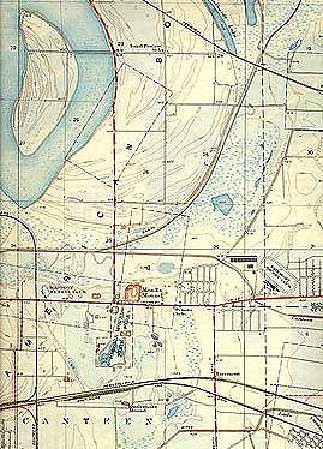
Part of the1935 USGS 7.5' quadrangle map of Cahokia area illustrating the absence of significant topographic relief of the American Bottom.
|
Topographic relief, however slight, is particularly important in influencing
the plants that grow at specific floodplain locations. This is because (a)
elevation effects a plant's roots distance to the water table, (b) minor
changes in elevation have considerable impact on a location's likelihood of
flooding, and (c) the time it takes for it to drain after a flood. Hydrophytic
(water-tolerant) plants can survive and even thrive in places subject to
frequent flooding. Plants requiring better drained soils are found on the
slightly elevated ridges, but even here, periodic flooding will temporarily
destroy plant and animal communities and create conditions suitable for
occasional invasion of hydrophytic species. Then through time, habitats change
as soils drain and conditions improve for plants and animals prefering drier
conditions. In this manner, both annual and catastrophic flooding maintain
habitat diversity and biological productivity in the American Bottom.

Field of maygrass adjacent to a strip of bottomland forest illustrates the role of elevation in creating habitat diversity.
|

